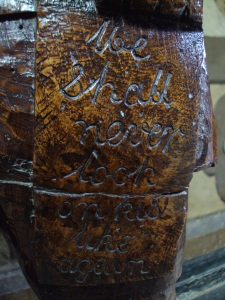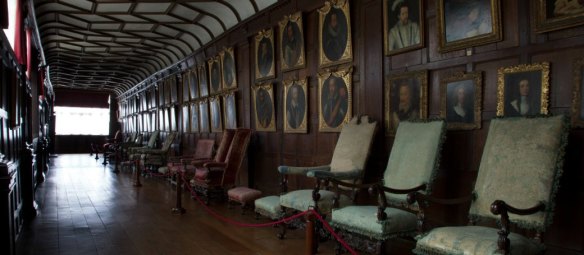We’ve been very lucky recently to have been joined by a new conservation volunteer at Knole who’s spent a few months with us to lend a helping hand. He has very kindly written a little about his experiences with the team!
Volunteering at Knole
The single greatest and most interesting part of being a Conservation volunteer at Knole has been the immense variety of tasks and small projects that are undertaken by the conservation team.
Involving everything from cleaning 18th century caffoy fabric to waxing the lead fish tank in stone court, it is hard to say that being a Conservation volunteer at Knole entails two even similar days. With the nature of the larger restoration project at Knole, as well as the day to day running of any property of Knole’s size the outlets for conservative work is seemingly endless.
The Monday deep cleans are the best chance to work on the items which are either vast or extremely precious, requiring more time and specialist equipment than many other of the usual but by no means insignificant objects. Utilising specialist material brushes as well as museum vacuums in my opinion the most fascinating part of the deep clean has been the work on the Orangery statues as well as the Roman busts of stone court. Whilst the cleaning of the Great Screen using cloth and ladders is also spectacular, if you think the screen is not amazing enough.

The Great Screen was built c.1605-08 when Thomas Sackville did much to create the Knole you see today. The impressive edifice is bristling with heraldic symbols.
Being involved in the caffoy cleaning project was also highly rewarding. Once again the opportunity to use specialist conservation equipment and follow the stringent methods used to transform the fabric highlighted how precious Knole’s textiles really are. This time it was novel to use smoke sponges and once again low power vacuums to restore the caffoy. I can say that the process of removing a few hundred years’ worth of grime from the fabric was the most rewarding part of all of the mini projects which I have helped with over the last two months.

The caffoy material normally lines the Cartoon Gallery. During July 2016 we gave this piece a thorough clean!
Another untold perk of being a volunteer in the conservation team here at Knole is that you truly get to experience the full character of the property, through objects, the different conditions and periods of each parts of the house, some of which is publicly accessible. Being able to see items which the team have restored or conserved is also fulfilling and history creating in itself.
All in all I have thoroughly enjoyed what seems like a very short couple of months at Knole with the conservation team and cannot overstate how fundamental they are to the condition and running of Knole as one of the country’s greatest properties. I would recommend to anyone who has even a slight interest in conservation or history in general to give conservation volunteering at Knole a go.
-Matthew


















































